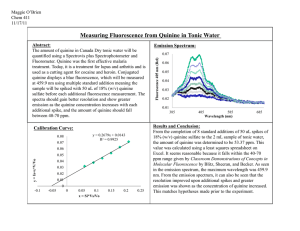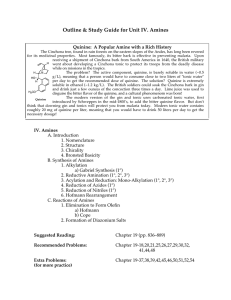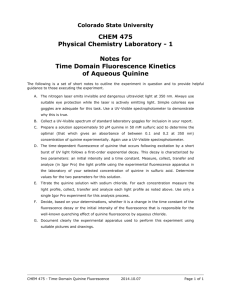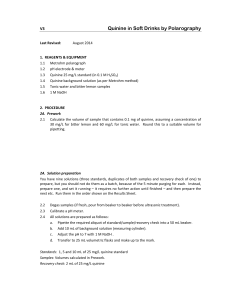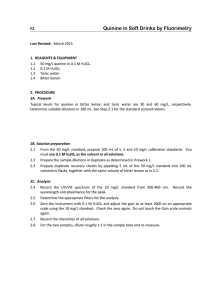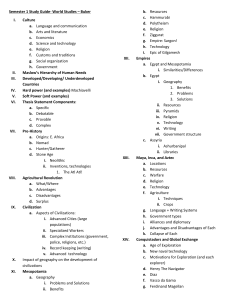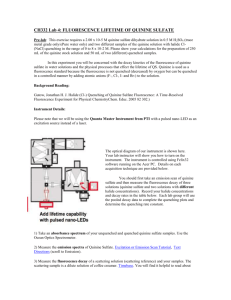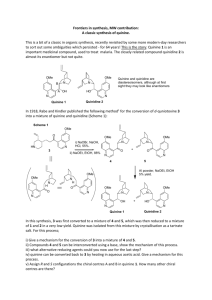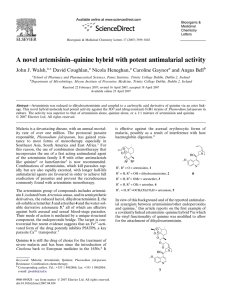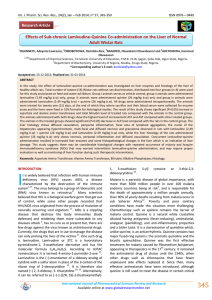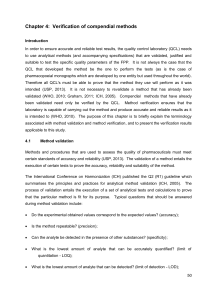Appendix S5: Severe malaria survey tool for pharmacy
advertisement
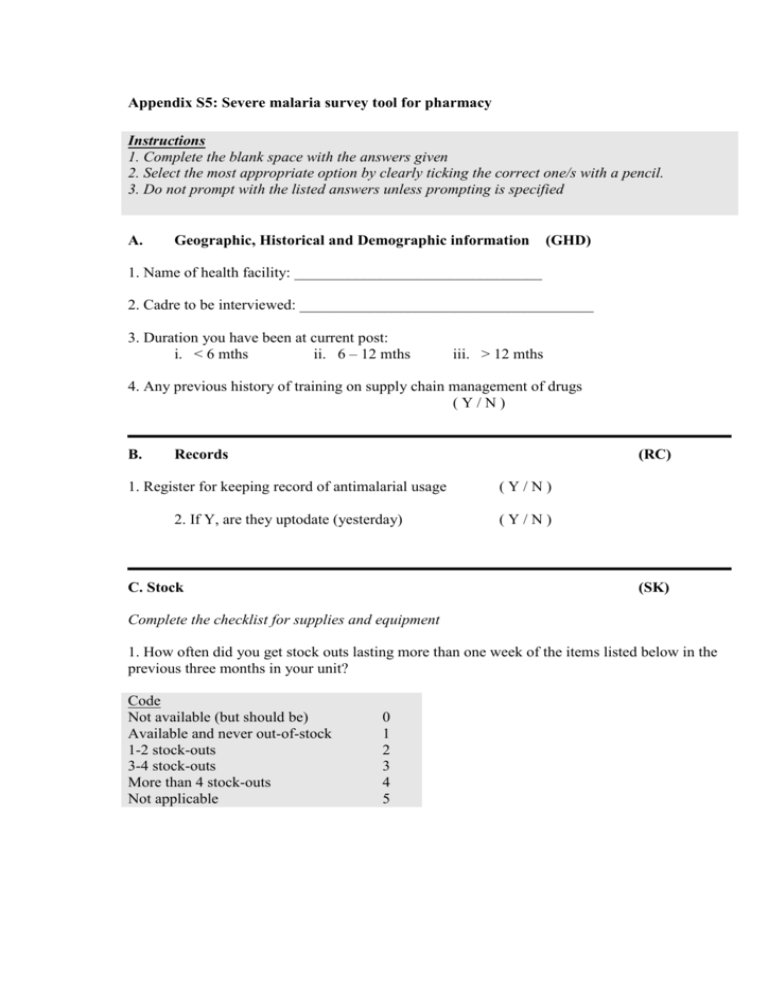
Appendix S5: Severe malaria survey tool for pharmacy Instructions 1. Complete the blank space with the answers given 2. Select the most appropriate option by clearly ticking the correct one/s with a pencil. 3. Do not prompt with the listed answers unless prompting is specified A. Geographic, Historical and Demographic information (GHD) 1. Name of health facility: ________________________________ 2. Cadre to be interviewed: ______________________________________ 3. Duration you have been at current post: i. < 6 mths ii. 6 – 12 mths iii. > 12 mths 4. Any previous history of training on supply chain management of drugs (Y/N) B. Records (RC) 1. Register for keeping record of antimalarial usage (Y/N) 2. If Y, are they uptodate (yesterday) (Y/N) C. Stock (SK) Complete the checklist for supplies and equipment 1. How often did you get stock outs lasting more than one week of the items listed below in the previous three months in your unit? Code Not available (but should be) Available and never out-of-stock 1-2 stock-outs 3-4 stock-outs More than 4 stock-outs Not applicable 0 1 2 3 4 5 Items i. Quinine (parenteral) ii. Normal saline iii. 50% dextrose iv. 5% dextrose v. Blood for transfusion vi. IV giving sets vii. Blood transfusion set viii. Syringes ix. Quinine tablets Frequency Main reason for stock-out 2. Are there particular months of the year when you are more likely to get stock-outs of: i. Quinine inj (Y/N) ii. Blood for transfusion (Y/N) iii. Quinine tablets (Y/N) 3. If Y, when? i. Quinine inj ___________________________________ ii. Blood _______________________________________ iii. Quinine tablets _______________________________ D. Supplies and Supply management (SSM) 1. Which of the following are available in the pharmacy unit? Item Drugs Quinine Chloroquine Sulphadoxine-pyrimethamine Artemether-lumefantrine Artemether Artemisinin Artesunate Arteether Diazepam Paracetamol Phenobarbitone Furosemide Fluids Dextrose Specification Injectable Oral Injectable Oral Oral Injectable Rectal IV Rectal Injectable Injectable Rectal Oral Suppositories Injection Injection 50% 30% 25% 10% 5% 2 Yes No Saline Fluid bottles Darrow’s solution Item 0.9% 100ml 200ml 500ml Half strength Specification Full strength Yes No Ringer lactate Water for injection 2. Is there a method in place for preventing stocks-outs? (Y/N) 3. If Y, what is done? _____________________________________ ________________________________________________________ 4. If N, why not? __________________________________________ ________________________________________________________ 5. In the last year has quinine expired in the pharmacy/store? (Y/N) 6. If Y, why? ________________________________________ 7. Is there a method in place for quantifying the antimalarial needs? (Y/N) 8. If Y, what is it? ________________________________________ ________________________________________________________ 9. If N, why not? _________________________________________ 10. Is your supply of antimalarials sufficient for the patients that are admitted? (Y/N) 11. If N, which ones are not? ______________________________ 12. If Y, how do you ensure adequate supply? _________________ ______________________________________________________ 13. Do you supply IV fluids in smaller bottles (100ml/200ml) for children ( Y / N ) 14. If Y, what have been the benefits _________________________ _______________________________________________________ 15. If N, why not? _________________________________________ ________________________________________________________ 16. Do you keep oxygen for use on the inpatient medical and paediatric wards (Y/N) 17. If N, why not? ________________________________________ 3 17. What specific aspects of drug management and supply are weak in your health facility? i. ________________________________________________________ ii. ________________________________________________________ iii. _______________________________________________________ 18. What specific aspects of drug management and supply do you think are performed very well in your health facility? i. ________________________________________________________ ii. ________________________________________________________ iii. _______________________________________________________ 19. What suggestions do you have to improve the quality of treatment given to patients with severe malaria in your health facility? i. __________________________________________________________ ii. __________________________________________________________ iii. _________________________________________________________ iv. _________________________________________________________ E. Supervision (SUp) 1. Have you undergone any form of supervision in the last six months? (Y/N) 2. If Y, were you comfortable with the process? (Y/N) 3. Who has supervised you in the last six months? Within the health facility i. Colleague ii. Immediate senior iii. Head of unit iv. Head of health facility From outside the health facility Specify _________________________ 4. How often have you been supervised in the last six months? i. Once ii. Twice iii. Thrice iv. Monthly v. None 4 F. Pharmacovigilance (PV) 1. Are you informed of any adverse reactions of the drugs that are used in your facility? (Y/N) 2. If Y, which drugs do you routinely keep records for their reactions? ________________________________________________________ ________________________________________________________ 3. If Y, who informs you and how? ____________________________ 7. If Y, who do you report them to? ___________________________ ________________________________________________________ 8. If N, why not? __________________________________________ Date: ___ / ____ / 2009 Time _______ am /pm Completed by: _________________ (name) 5
